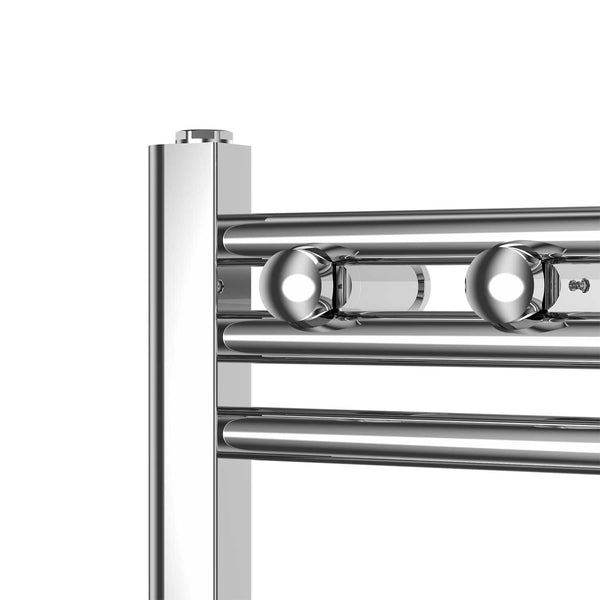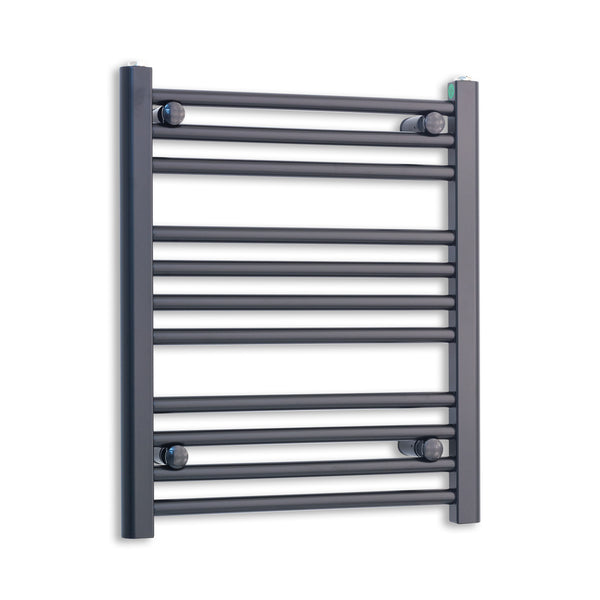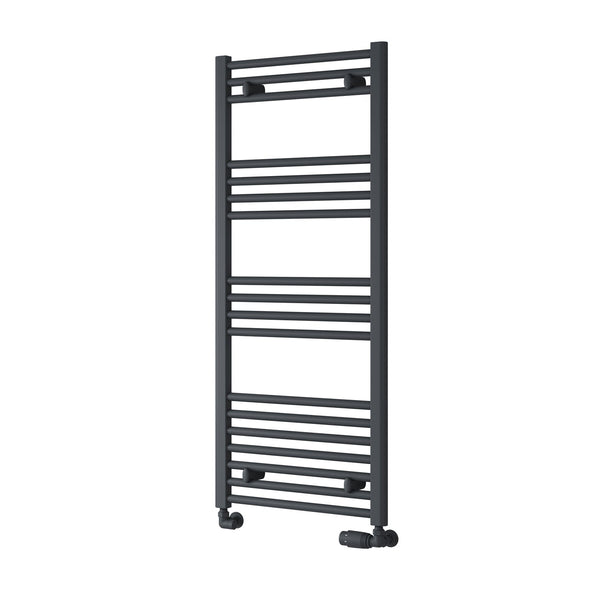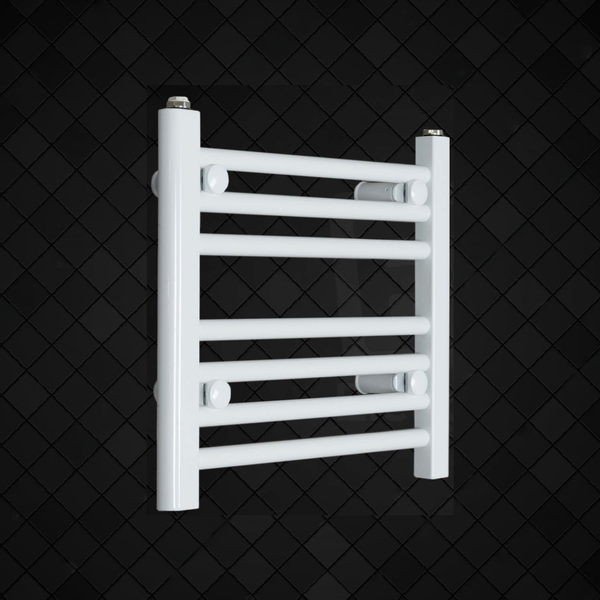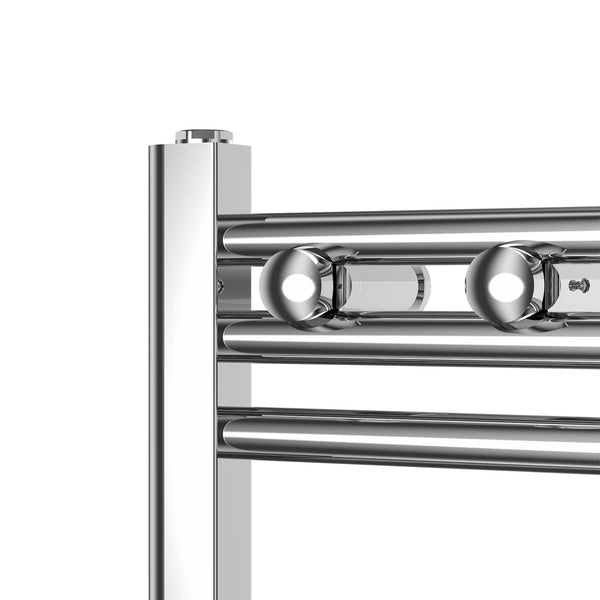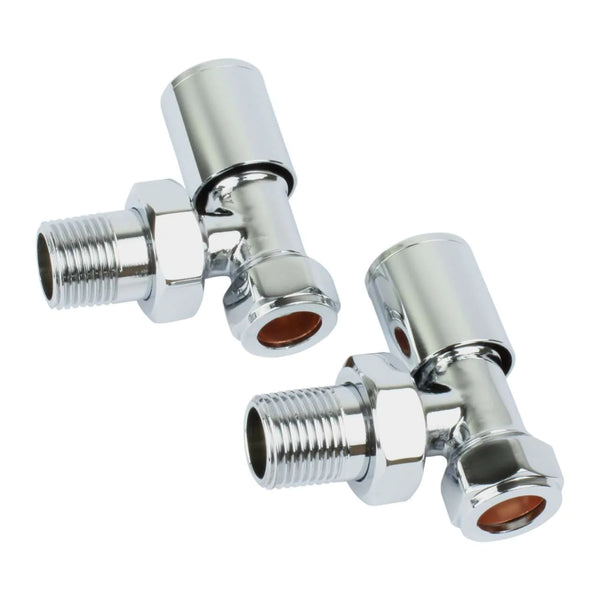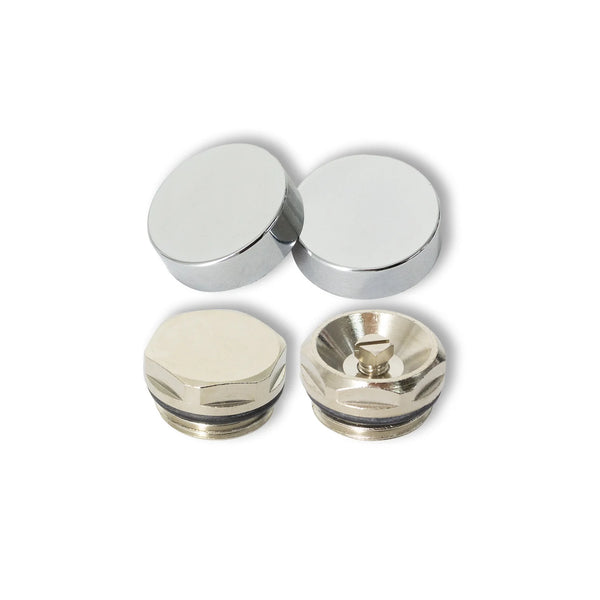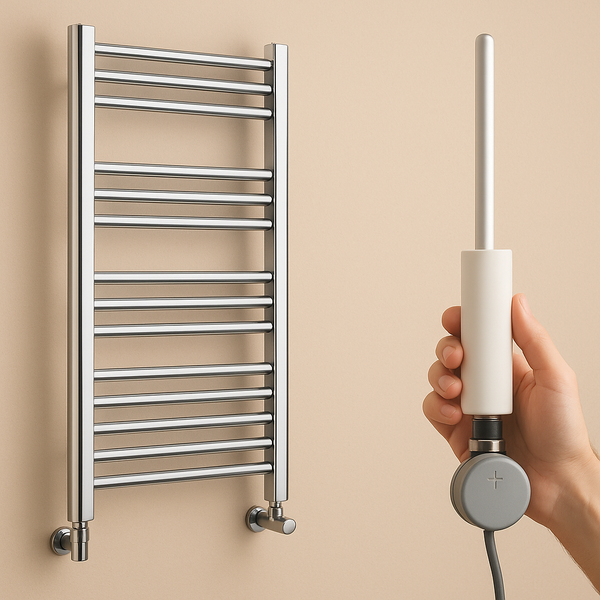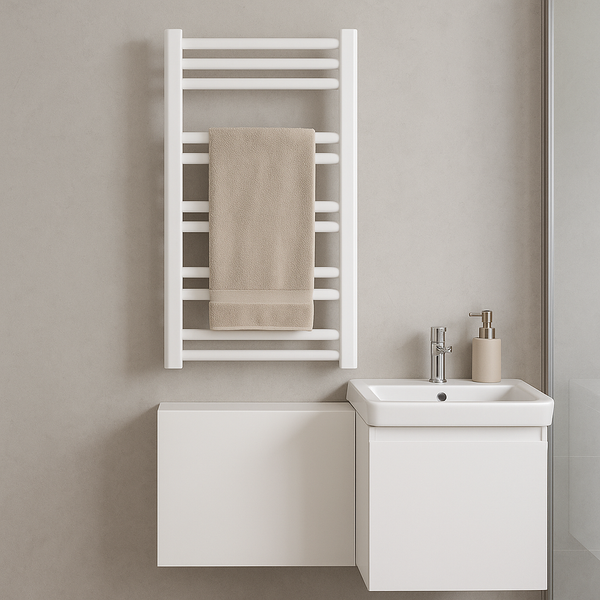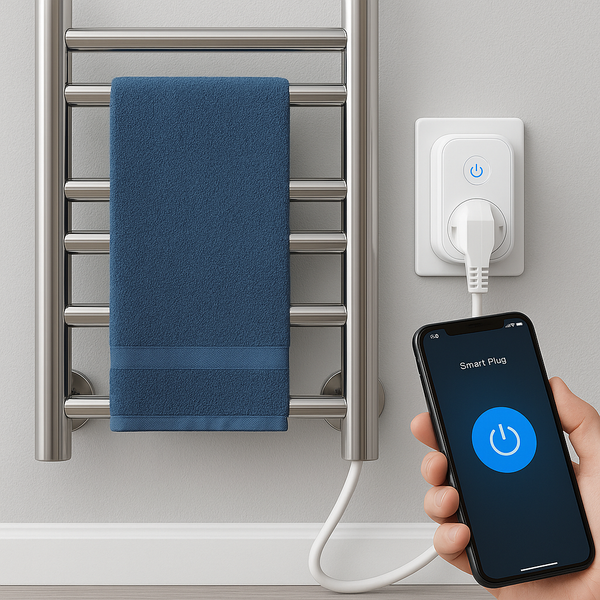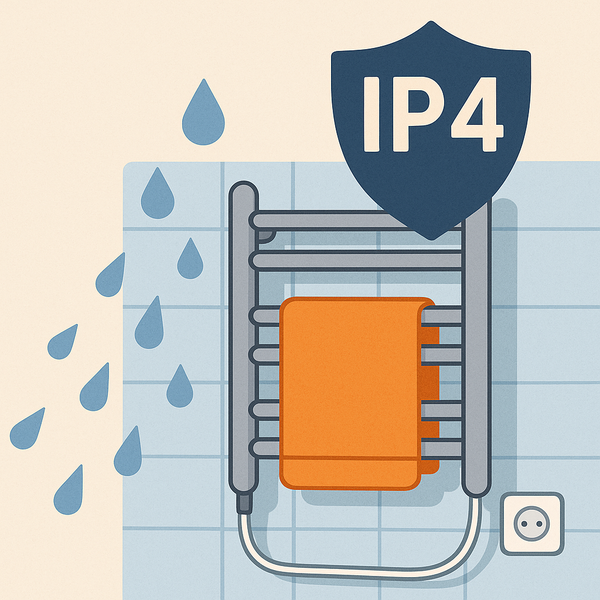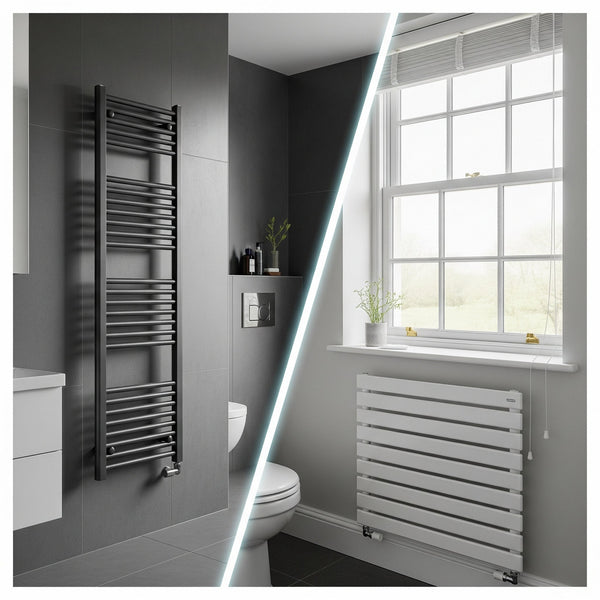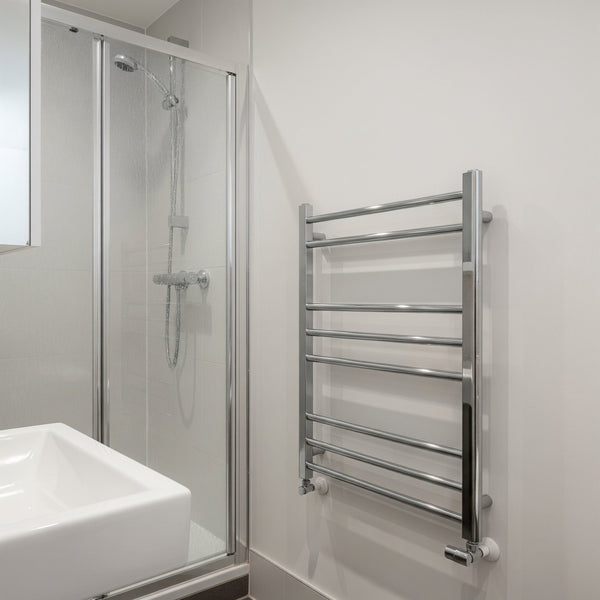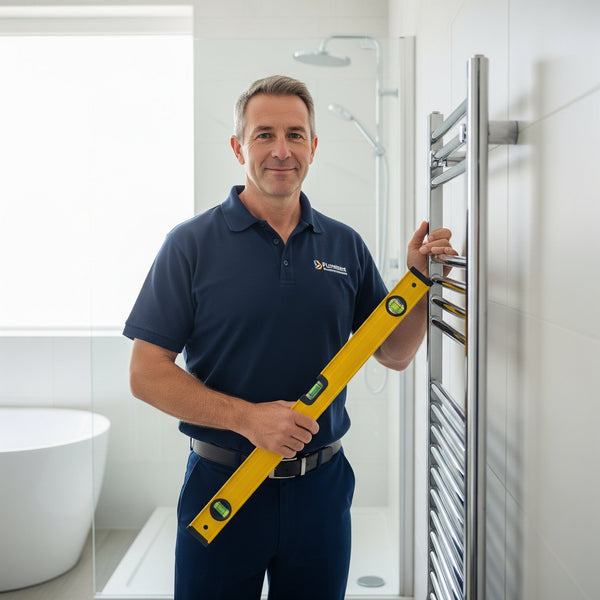Towel Rail Material Guide: The Difference Between Stainless Steel, Chrome & Aluminium
When choosing the perfect towel rail for your bathroom, most people focus on size, style, and heat output. But there’s another factor that often gets overlooked material. The material of your towel rail affects not only its appearance but also its durability, heat performance, and how well it resists corrosion in the humid environment of a bathroom.
In this guide, we’ll compare the three most common materials used in towel rail manufacturing: stainless steel, chrome, and aluminium. By the end, you’ll have a clear understanding of which one best suits your budget, your needs, and your bathroom environment.
Why Material Matters
Your towel rail is exposed daily to moisture, steam, and fluctuating temperatures. That’s why choosing the right material is crucial for both performance and longevity. The wrong material can corrode, flake, or underperform costing you more in replacements and energy bills.
Let’s look at how stainless steel, chrome, and aluminium compare in terms of:
- Heat efficiency
- Corrosion resistance
- Durability
- Maintenance
- Cost
- Aesthetics
Stainless Steel Towel Rails
Stainless steel towel rails are considered premium in the market and for good reason. Made from high-grade steel (typically 304 or 316), these radiators are known for their exceptional corrosion resistance and long lifespan. They are not just coated or plated, but made entirely of stainless steel inside and out.
✅ Pros:
- Highly resistant to rust and corrosion perfect for humid bathrooms
- Excellent long-term durability
- Better heat retention and distribution than chrome
- No peeling or flaking finish over time
- Available in polished or brushed finishes
❌ Cons:
- Generally more expensive than chrome or aluminium
- Heavier may require more robust wall mounting
Ideal for bathrooms where moisture is constant, such as family bathrooms, wet rooms, or coastal properties. If you’re planning a luxury upgrade, a stainless steel towel rail is a smart long-term investment.
Chrome Towel Rails
Chrome towel rails are among the most popular choices due to their affordability and sleek, mirror-like appearance. However, what many don’t realise is that chrome is a plating not a solid material. These radiators are typically made of mild steel and coated with a thin layer of chromium for aesthetic purposes.
✅ Pros:
- Attractive shiny finish suits modern and classic bathrooms
- More affordable than stainless steel
- Wide availability and size options
❌ Cons:
- Lower corrosion resistance prone to rust if the plating chips or is scratched
- Not suitable for very humid or poorly ventilated bathrooms
- Finish can peel or flake over time
- Lower heat output than stainless steel
Chrome is a great choice for en-suites, cloakrooms, or decorative installations where moisture isn’t constant. Just be sure to clean it regularly and avoid abrasive cleaning products to maintain the finish.
Check out our full range of Chrome Towel Rails for stylish and budget-friendly options.
Aluminium Towel Rails
Aluminium towel rails are becoming increasingly popular due to their lightweight construction and excellent heat response. Aluminium heats up and cools down faster than other materials, making it ideal for homes where energy efficiency is a top concern.
✅ Pros:
- Very lightweight easy to install on any wall type
- Excellent energy efficiency heats up quickly
- Corrosion-resistant (though not as much as stainless steel)
- Modern designs available in matt black and anthracite
❌ Cons:
- Can feel less solid than steel-based models
- Doesn’t retain heat as long as stainless steel
- Usually higher cost than chrome, but less than stainless steel
Aluminium rails are perfect for contemporary homes, especially where wall space is limited or insulation is strong. If you’re going electric, aluminium is often the best match for rapid heat-up.
Discover our Aluminium Towel Rail Range for lightweight and energy-efficient options.
Quick Comparison Table
| Feature | Stainless Steel | Chrome | Aluminium |
|---|---|---|---|
| Corrosion Resistance | Excellent | Fair | Good |
| Heat Retention | High | Moderate | Fast Heat-Up, Quick Cool-Down |
| Weight | Heavy | Moderate | Light |
| Maintenance | Low | Medium | Low |
| Finish Durability | Doesn’t flake | May flake over time | Painted / anodised |
| Cost | High | Low | Mid-High |
Which Material Should You Choose?
If you're renovating a family bathroom or wet room, stainless steel is the most durable and hygienic choice. For budget-conscious projects, chrome offers plenty of style at a lower cost just avoid high-moisture spaces. And if you want fast, efficient heating with a lightweight design, aluminium is the modern choice that delivers both form and function.
Whatever your needs, Company Blue stocks a wide range of towel rails in all materials, sizes, and styles all available from UK stock with fast delivery. Still unsure? Get in touch with our expert team for free advice on the best material and model for your bathroom project.
Frequently Asked Questions About Towel Rail Materials
1. What is the most rust-resistant towel rail material?
Stainless steel is the most rust-resistant material, making it ideal for bathrooms with high humidity or poor ventilation.
2. Do chrome towel rails rust over time?
Yes, if the chrome plating gets scratched or chipped, the underlying mild steel may rust, especially in damp environments.
3. Are aluminium towel rails energy-efficient?
Yes, aluminium heats up quickly and uses less energy, making it an efficient choice for electric towel rails.
4. What’s the difference between chrome and stainless steel towel rails?
Chrome rails are mild steel coated with a shiny finish, while stainless steel rails are solid metal, more durable, and resistant to corrosion.
5. Which towel rail material is best for coastal homes?
Stainless steel is the best option for coastal properties due to its superior corrosion resistance in salty air.
6. Do aluminium towel rails stay warm as long as steel ones?
No. Aluminium heats up faster but also cools down more quickly compared to stainless steel or chrome.
7. Are stainless steel towel rails worth the higher cost?
Yes, their durability, resistance to rust, and longer lifespan make them a worthwhile investment for long-term use.
8. Can I use a chrome towel rail in a wet room?
It’s not recommended unless the room is well ventilated. Stainless steel is a safer choice for wet rooms.
9. Which towel rail material is the lightest?
Aluminium is the lightest material, making installation easier, especially on plasterboard or stud walls.
10. How do I clean and maintain each towel rail material?
Use a soft cloth and mild detergent for all types. Avoid abrasive cleaners, especially on chrome and painted aluminium finishes.
